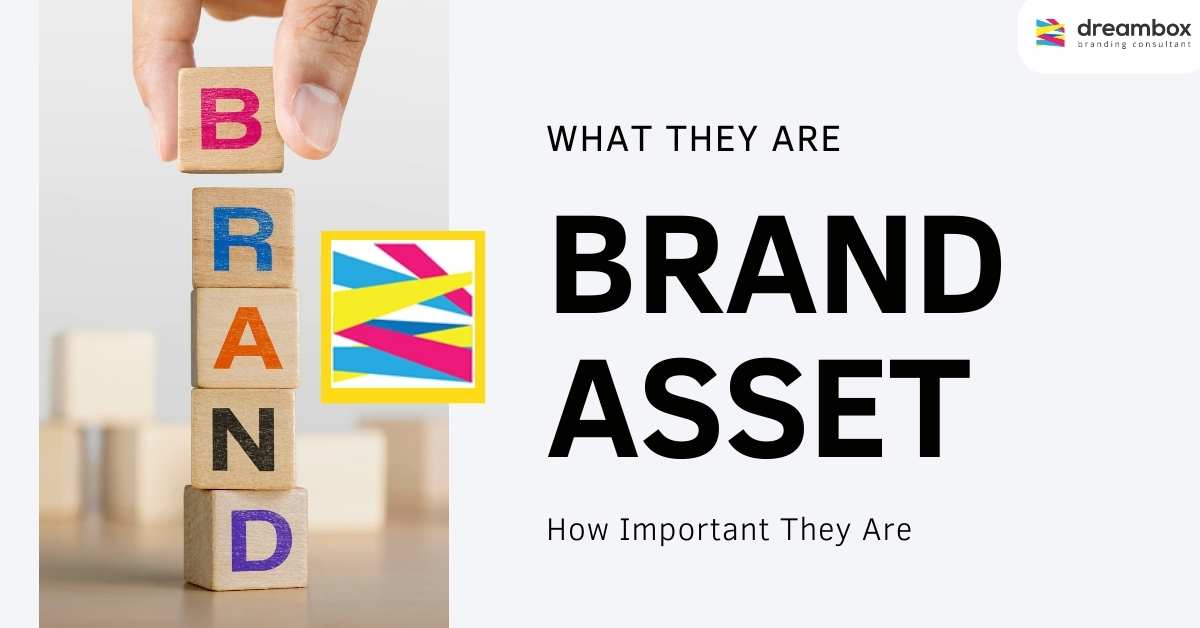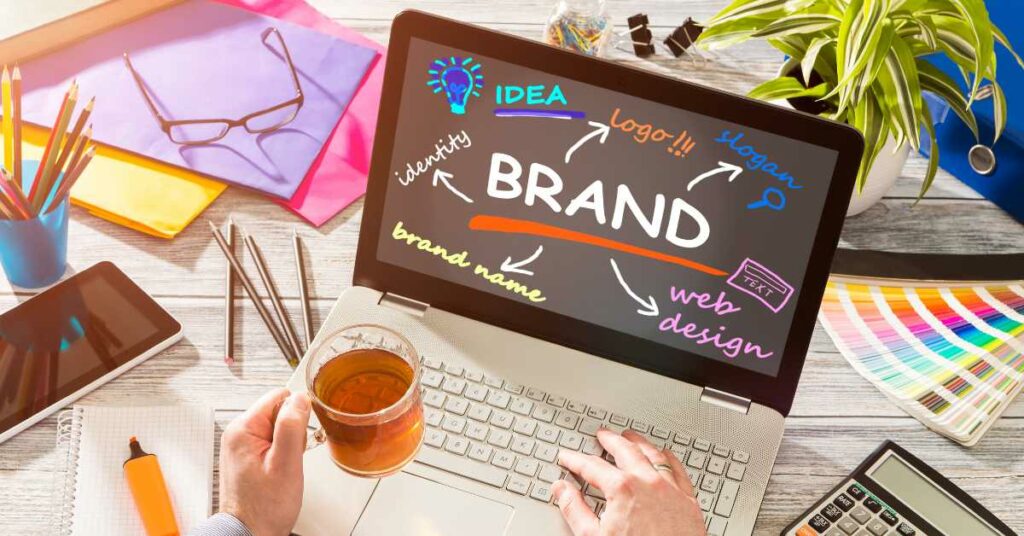Establishing a memorable brand identity is a challenge in today’s crowded marketplace, where competition for consumer attention is fierce. This is where the brand asset comes into play.
It is the cornerstone for creating a unique and lasting connection with your audience. This article will define brand assets and their importance for business, especially in marketing. Before we get into the article’s discussion, you also need to know 4 Ways To Globalize Your Brand And Business.
What Is Brand Asset?
At its core, brand assets are any element that represents and communicates your brand to the public. These can range from tangible features like logos, color palettes, and packaging designs to intangible aspects such as brand stories and values.
Put brand assets are the distinct elements that represent and communicate a brand to the public. It plays a crucial role in shaping a company’s identity and fostering brand recognition in a crowded market.
It’s important to note the difference between brand assets and digital assets. While digital assets encompass any digital files a brand can use, brand assets precisely convey a brand’s identity.
The Importance of Brand Assets for Business
So, why do brand assets matter for businesses? It collectively represents and communicates a brand to the public. Here are the details:
1. Building Brand Trust
Unified brand assets contribute to the establishment of brand trust through consistency.Customers can swiftly and easily identify a company’s products and services, fostering an association with open communication and quality customer service.
This intentional marketing approach helps brands build a reliable reputation centered on meeting audience needs and industry authority.
2. Improving ROI
Next, consistent brand assets can significantly enhance return on investment (ROI). Rather than expending resources on creating new assets for every campaign, leveraging existing branded assets like logos, taglines, and visual elements creates familiarity between brands and customers.
This familiarity nurtures purchasing habits based on recognizing identifiable products and services.
3. Growing Brand Identity
The creation of a robust brand asset necessitates the development of comprehensive brand guidelines. These guidelines are crucial to building and reinforcing a brand’s identity.
By focusing on creating solid assets, companies are compelled to compile and produce guidelines, aiding marketers in ideation, development, transformation, and solidifying a consistent brand identity.
12 Types of Brand Assets to Strengthen Your Brand Identity
So, establishing a memorable brand with unique assets is crucial to capturing consumer attention. For example, here are 12 types of brand assets that can help strengthen your brand identity:
1. Brand Name
The brand name provides a unique and distinct identity to the company or product. It is the verbal representation that distinguishes the brand from competitors. So, it is essential to create a well-crafted brand name that is easy to remember.
2. Logo
The logo is one of the most essential assets to identify your brand identity. A logo is a visual masterpiece that encapsulates your brand’s essence.
Take Apple’s iconic logo, for example. It’s a simple yet powerful symbol that instantly connects with consumers.
3. Color Palette
Up to 90% of initial impressions are based on color alone. That’s why colors are more than just visual elements. They can convey emotions and leave a lasting impression on audiences.
Coca-Cola’s red is a classic example immediately recognizable and synonymous with the brand.
4. Typography
The fonts you choose also speak about your brand. For example, with its exclusive Google Sans font family, Google ensures a consistent and distinctive typographic identity.
5. Tagline or Catchphrase
As a brand asset, a catchy tagline complements your logo and color palette. For instance, McDonald’s famous “I’m Lovin’ It” resonates globally, enhancing brand recall among all consumers.
6. Iconography and Illustration (Visual Assets)
Beyond the logo, consistent iconography and illustration styles also reinforce your brand across various platforms.
Take Starbucks’ iconic logo and illustration style as an example. Their design is seamlessly integrated into their products and marketing materials.
7. Website
Your brand’s online presence is a crucial asset. A good and user-friendly website facilitates easy navigation and aligns with the brand’s identity.
8. Brand Voice
Brand voice is also a brand asset. It refers to how you communicate, and it shapes your brand personality. For example, Harley-Davidson’s assertive voice exudes confidence, establishing the brand as reliable and consistent.
9. Mascot
A recognizable mascot can personify your brand to audiences. For instance, Michelin’s Michelin Man has been an enduring mascot since 1894, adding a friendly face to the tire manufacturer’s brand.
10. Sound Effects, Music, and Jingles
Are you a Netflix user? If yes, you must be familiar with Netflix’s “tudum” sound effect. Audio elements are a brand asset that can create a memorable brand experience.
Social media is a dynamic space for brand reinforcement. For example, Airbnb’s Instagram presence showcases consistent imagery, reinforcing its mission of providing a place for everyone.
12. Product Packaging
Packaging is a physical entity that customers can see and touch. It exists in the real world and visually represents the brand. Moreover, the design, colors, and elements are often consistent with the brand identity.
Brand Asset Tips and Best Practices
Building a solid brand identity is crucial. To ensure your brand assets are adequate, consider the following tips and best practices:
1. Use Brand Asset Management (BAM)
Invest in BAM systems to efficiently store, organize, and protect assets, ensuring consistent usage and protecting against copyright issues.
2. Ensure Accessibility
Brand assets should be easily accessible to various teams. Employ technologies for easy access, granting and controlling permissions to multiple teams, and speeding up digital workflows.
3. Enforce Governance Policies
Next, establish and update governance policies, incorporating digital rights management systems to prevent incorrect or illegal asset use.
4. Use Data Tracking and Analysis
Leverage analytics for insights into brand asset success and overall usage, understanding audience preferences.
5. Create a Brand Guide
Develop and distribute a thorough brand guide to prevent asset misuse. Clearly outline the correct usage of brand elements, including the name, logo, and color palette, both within the company and among third parties.
6. Control Asset Access
While ensuring Accessibility, control access permissions within a DAM system, adjusting as needed.
7. Utilize Label and Tag Assets
Organize assets by prioritizing labeling and tagging within the brand asset management system. Use DAM (Digital Asset Management) metadata to tag assets based on their use, updates, and retirement.
8. Set Up Approval Systems
Lastly, implement asset approval systems for administrators to view and approve new, updated, and archived assets. This helps eliminate asset misuse, maintains brand consistency, and ensures assets align with brand guidelines.
By adhering to these best practices, you can harness the power of your brand asset to build trust, improve ROI, and solidify your unique brand identity. For more information, try Dreambox Branding Service, or contact us now!




